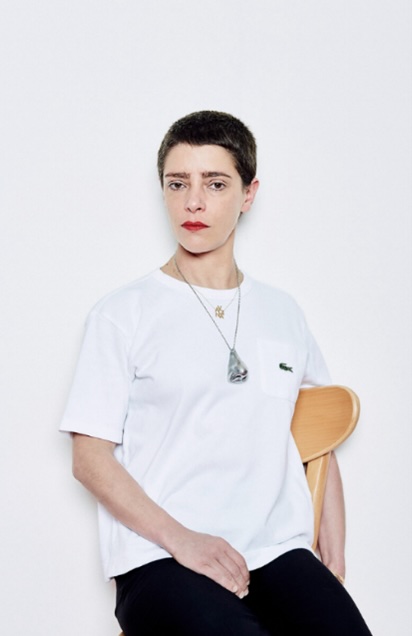
Cycle The Artist Presents — Lili Reynaud Dewar presents Martha Wilson
ARCHIVE
Free, reservation required
For this second edition of The Artist Presents, Lili Reynaud Dewar, French performance and visual artist, will comment and share her vision of the works and overall oeuvre of Martha Wilson.
Conceived in homage to the famous Artists on Artists lectures held at the Dia Art Foundation, this lecture series invites artists to share their ideas and opinions about the work of another artist on display at the Bourse de Commerce — Pinault Collection.
Martha Wilson, born in 1947, was an early New York feminist artist and pioneer of performance art. In the 1970s, she began making herself up to impersonate a series of subversive characters. Staging herself in photographs and videos, she took on a whole slew of different identities to question the norms imposed on women: what do women want, or rather, how does society decide what women want? Martha Wilson looked at how women are supposed to appear in the public sphere and how they learn these conventions. In the series “Posturing” and “Posturing: Age Transformation” (1972-1973), she experimented with other subjectivities than her own by embodying a series of characters struggling with gender and age stereotypes. A collection of “personality experiments”, these portraits depicted people trying to be something other than who they were: a woman trying to live out the inner life of a man who was trying to be a woman, or “a 25-year old woman trying to look like a 50-year old woman who was trying to act as if she were 25 years old”. A Portfolio of Models (1974), a set of six black and white photographs, depicts The Woman at Home, The Goddess, The Woman Labourer, the Career Woman, The Lesbian, and Mother Earth. “These are the models that society offers me… the only thing left is to be an artist”.
Lili Reynaud Dewar
Lili Reynaud Dewar was born in 1975 in La Rochelle. Trained in classical dance at the conservatory, she then became a visual and performance artist. Blending performance and activism, her practice involves painting her naked body to create a new visual grammar. She blurs the boundaries between the private and public spheres. As she stages her artist’s body, the museum becomes a private space and the gestures of our collective memory become a personal physical language. The paint that covers her body transforms it into an extreme mutable material, to the point of abstraction.